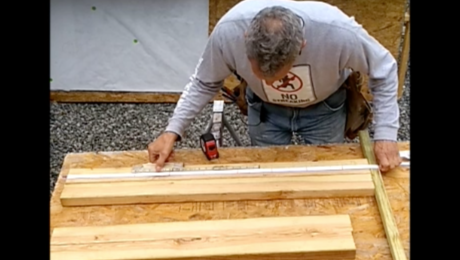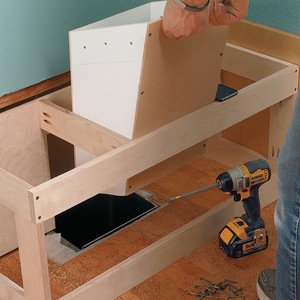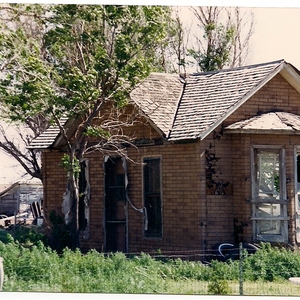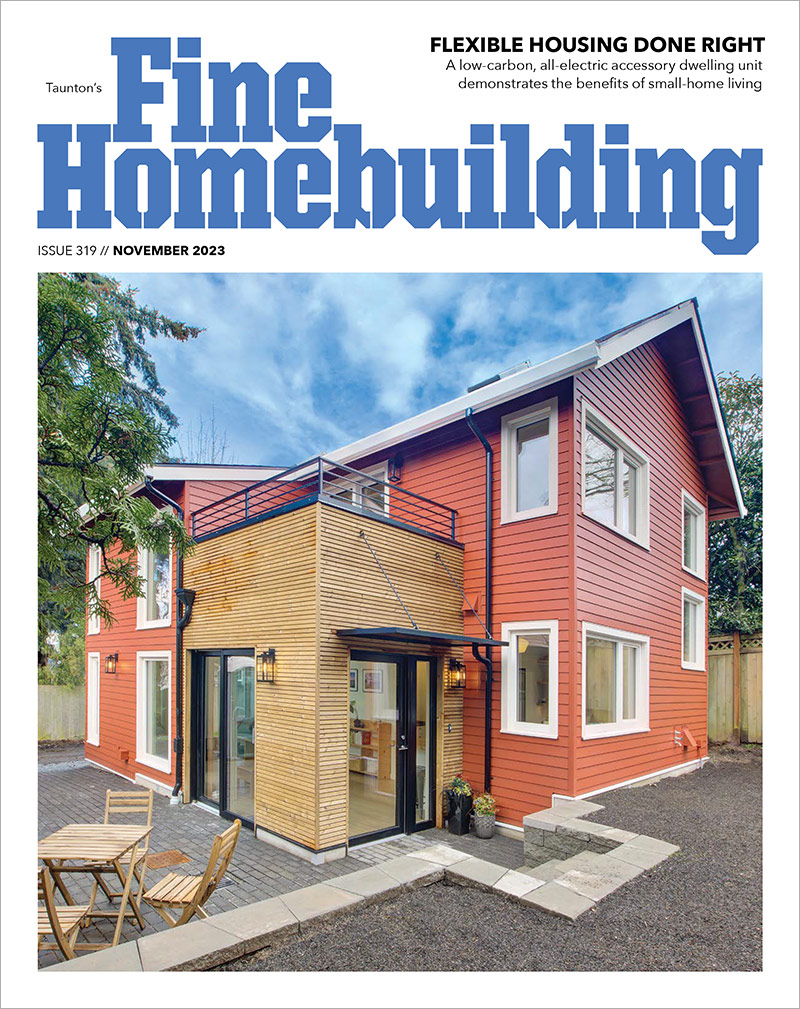I am looking for information/input on wood-fired gasification boilers. The internet is abound with companies touting the benefits of their particular system. I am curious if any folks within this building community have experience with such home/water heating systems. My interest stems from a potential client who is looking to use an alternative (to oil, coal, gas) fuel to heat a large spa-like pool of water as well as a sauna and a small cabin or yurt. Thoughts, idea’s, comments all appreciated.
Discussion Forum
Discussion Forum
Up Next
Video Shorts
Featured Story

The "She Build" initiative is empowering women in Seattle, WA by ensuring they have safe, healthy homes.
Highlights
"I have learned so much thanks to the searchable articles on the FHB website. I can confidently say that I expect to be a life-long subscriber." - M.K.

















Replies
I hope they have a lot of forest
I doubt there is much cost saving when you consider how labor intensive hauling, cutting, storing, stoking a wood fire is.
If you are retired and on a fixed income then working for free is not a big deal. If you have two jobs, small kids, and a house to finish remodeling then every task that takes minutes out of your day has an impact on how much you can accomplish and wood fuel isn't that appealing.
I have a lot of wood to dispose of so I burn it to get rid of it and that aspect offsets any worries about the effort that goes into handling and managing the fire. I also like the fact that you feel and see how fast or slow your fuel supply/budget diminishes depending on how well you regulate the temperature and heat loss in the house.
Wood heat creates a lot of mess with ash, sawdust, smoke etc so I find it best suited to minimally landscaped rural settings. I can't really comment conclusively on the pollution created by wood heat but I suspect it is far dirtier than propane or natural gas.
If I had the time to install and set one up I would absolutely try a wood gasification boiler. One concern I have about them though is I have a hunch you need to be an amatuer engineer to utilize one effectively. In other words I don't know that my wife, the babysitter, the houseguests would have a clue how to paricipate in keeping it running yet they can all turn up/down a thermostat on a conventional heating appliance.
Karl
They do have somewhere between 10-15 acres of forested land which could easily supply the needed fuel. Although saving money is not the only motivation for wanting to burn wood. If you want to include in the total cost of burning wood all of your effort and labor that you put towards harvesting your fuel (which believe it or not some people actually enjoy), you should also include in the total cost of burning oil and gas all of the by-products of digging, refining, and shipping (not to mention the human cost of access to those foreign oil fields). But dont let me get distracted, now. Oh well, i guess its too late anyhow...I'd like to see a study of comparisons of CO2 released through decomposition of wood vs. gasification burning of wood as well as CO2 emissions oil processing, shipping, and boiling.
If you're talking about an outdoor wood-fired boiler, they're not EPA regulated and are extremely dirty, putting out the same amount of particulate as:
And, they often run on "idle" and have smokestacks that are low to the ground.
Solar & Super-Insulated Healthy Homes
The manufacturers out there for gasification type wood boilers claim 80%+ efficiency rates as well as close to zero emissions once the burn is going at which point you see no smoke. They point to the incredibly high burn temperatures 1500-2000 degrees as well as sealed secondary combustion chambers that allow for the "gasification" of the wood to take place. I am no expert on this, which is why I'm seeking other information, from others not trying to sell anyone anything. My feeling is that this gasification technology is in part a response to the overly polluting out-door wood boilers that you speak of. You have experience with solar and super insulated housing...any other insights into alternative methods of water heating?Oh and thanks to mesic for your post, the HS Tarm is one of the boilers that i was looking at. That you've had yours up and running for 30 years speaks well of them. I can also appreciate the convenience of the multi-fuel boiler, I'll run that one past the owner.
once the burn is going at which point you see no smoke
Clearly gasification is better, but when "the burn is going" even standard outdoor type boilers can be pretty clean. It's the idling between burns that can get really nasty.
We seasonally use a heat pump water heater as we're in a dehumidification climate. Might be applicable for you, but you haven't filled in your profile particularly about where you live. Here, our heat pump beats all other forms of water heating, solar included, with its cool dry air byproduct.
Our next house gets an active solar system for the part of the year we don't want dehumidification, plus lap pool heating. Recycled, from the bad old tax credit days.
PAHS Designer/Builder- Bury it!
Thanks Tom, for the Heat Pump Water Heater tip, i've got some homework to do. We are in Western Massachusetts, do you know if it would be appropriate?"our next house gets an active solar system...plus lap pool heating"
Is that done in conjunction with HPWP system (a PV electric powered HPWP)?
You're welcome Steady. We turn our heat pump water heater on when the house is 70º or better (summers) which is when we want dehumidification. AC is standard here but we have no need, primarily due to the house. Everybody here needs dehumidification.
Without considering the HPWH dehumidification as 50% of our dehumidification need, the only benefit would be electric water heating at upwards of 3x resistance tank heaters' efficiency. We're conditioning 20,000 cu ft here. Next house substantially larger (with a 2 lane lap pool contributing to the humidity).
Probably grid-connected though I'm looking at woodgas fueled generation. I use too many watts for affordable photovoltaic (so far). My (tankless) heat pump water heater uses the same 30A breaker as the electric resistance water heater. The active solar system (antifreeze) is primarily for heating the pool.
With wood-fired boiler as backup! I've dragged 2 of them home. One's a monster that used to be a backup to the solar system I'll use. Way too large for my use. I've offered it cheap to everybody here, but no takers. I'm not expecting to ever use the (smaller) wood-fired boiler that I will install.
If you find a better site than http://www.energy.wsu.edu/ftp-ep/pubs/building/res/ht_pmp_water_htrs.pdf please post it. Once was a very good US govt site, but it disappeared some time ago. Neither particularly touted the byproduct: cool dry air. Does require a house configured such that you can take advantage of it. We currently waste the other byproduct: distilled water. There is a company that markets a heat pump potable water producer.
Western Mass, I know almost nothing about. Is AC common? Dehumidification?PAHS Designer/Builder- Bury it!
Heat Pump Water Heater... We are in Western Massachusetts, do you know if it would be appropriate?
An air-source heat pump in your climate is not very efficient because in the winter it often frosts up and the auxiliary electric resistance element has to cylce to defrost the coils.
But a ground-source (well-water) heat pump, though expensive to install, is efficient in cold climates because of the year-round constancy of ground temperature (which equals your average annual air temp). There are utility conservation programs, such as the Energy-Crafted Home in MA, which offers rebates and incentives for such installations.
And a solar preheater may be cost-effective, as payback for solar hot water panels is far better than for photovoltaics.
Riversong HouseWright
Design * * Build * * Renovate * * ConsultSolar & Super-Insulated Healthy Homes
Edited 1/27/2008 12:37 pm ET by Riversong
Cold climate heat pump (forced air heating):
http://www.gotohallowell.com/
They have a water heater under development.
Edited 1/27/2008 10:10 pm ET by danski0224
According to some of the sales pitch information that i read in a standard outdoor boiler a large percentage of the energy that is in the wood goes up in smoke, the gassification boiler harvests this energy, but there is no free lunch.
while it may visually appear to be smoke free, the products of combustion that are released into the atmosphere are more noxious. that is why on coal fired gasification boilers they are in a mad rush to install SCR's also known as scrubbers, which are basically huge catylitic converters for the gasification exhaust.
you also have fly ash to deal with from the gasification process, as opposed to the regular ash from a fire, and there are some things in there that are also more noxious, like mercury and arsenic.
i am no expert in this area, just relaying some of the information i have gathered in my curiosity, i am wanting to learn more about it myself. one thing i have heard about are the home sized gasification boilers that also make electricity that are used in europe. it occurs to me that if you have to have the boiler running for a 6 month heating season, you may as well make electricty with it also since you have to deal with the scrubber and the fly ash if you are at all environmentally concientious.
i would imagine you could link to the grid and have the meter spin backwards like in a photovoltaic system. the installation of these systems may be a good business.
The info by Karl is right on. I could add that having a few teenagers around could influence the choices. I have the HS Tarm multi-fuel boiler now 30 years old. Being retired and having sufficient properties to harvest wood from gives me the opportunity to gather sufficient material to last all winter and having the unit in my basement in a sealed room beside my workshop makes it easy to feed it when it's hungry before it decides to feed on oil. It thinks it's outside but I know it's in the basement but breathing outside air. I use it exactly 6 months switching the domestic HW also back to electric during the summer.
They do make a unit designed for wood only. They claim it is 80% efficient. Their quality is excellent and my unit looks like it will look like it does now, after another 30 years.
Besides all that it gave me an excuse to buy some toys. An ATV, a pickup truck and a quarter section of woodland up north. That led to the saw mill and the molder and a few chain saws not to mention the tractor with the fork lift etc. I better stop lest somebody [DW] sees this and realizes the true cost of all that free wood!---Mesic
Mesic,
I notice that you and some others on this Web forum refer to their domestic partner as "DW." A Web search fails to explain the abbreviation -- I know it isn't Dry Wall or Double Window -- and I hope that it doesn't have a basis in misogyny. Please tell me it doesn't stand for "dishwasher" or have some other disrespectful origin.
Dear Wife = DW
View Image “Good work costs much more than poor imitation or factory product” – Charles GreeneCaliforniaRemodelingContractor.com
Huck,
Thanks for the information. A reminder to the text-message generation: those of us raised without cell phones don't always understand the latest batch of abbreviations.
There is also SWMBO
She who must be obeyed :)
I have the H.S. Tarm also and enjoy filling that beast full of wood, I burn ours a little longer up here in Maine about 7 months but dont use any oil at all I lit it mid Oct and haven't let it burn out yet, unless I need to go away for more then a day, then I'll shut her down. did I say shes one hot bit+ ch. I cut up 8 cords and will probably have a cord or more left over. I bought 8 cords all hard wood tree length for 800.00 a great price even with cutting it up. and a few friends helped cut it up. and I'll help them do stuff around there house. it also gave me a reason to buy a new chainsaw this year. A Stihl ms 361 59ccwith a 20 in bar and it just cuts so good . bought the chain saw on ebay from Virginia from someone that said it was too much saw for what they do.Carpentry and remodeling
Vic Vardamis
Bangor Me